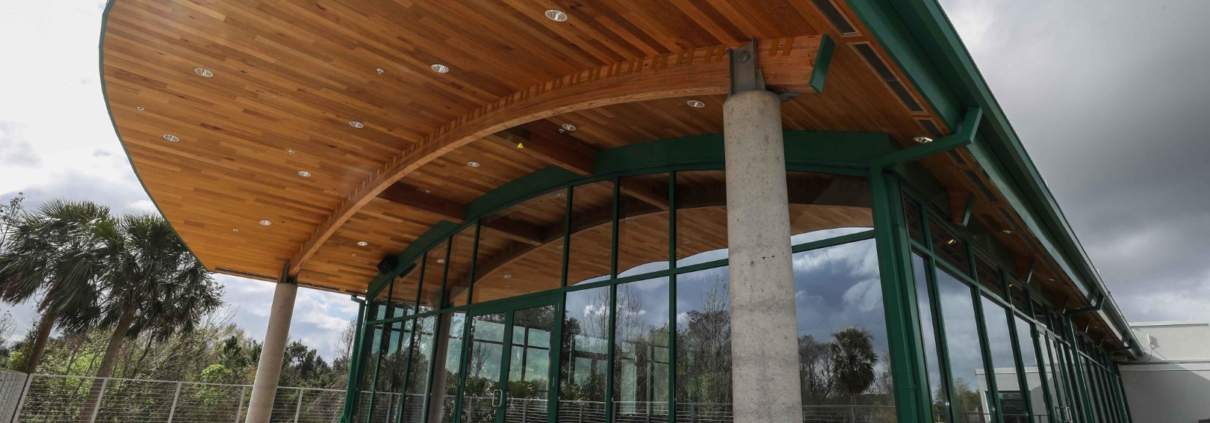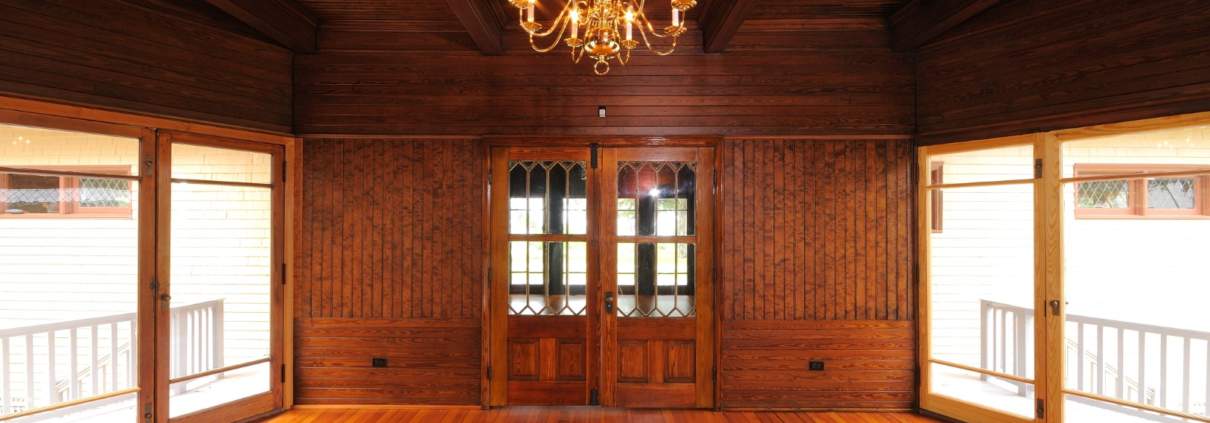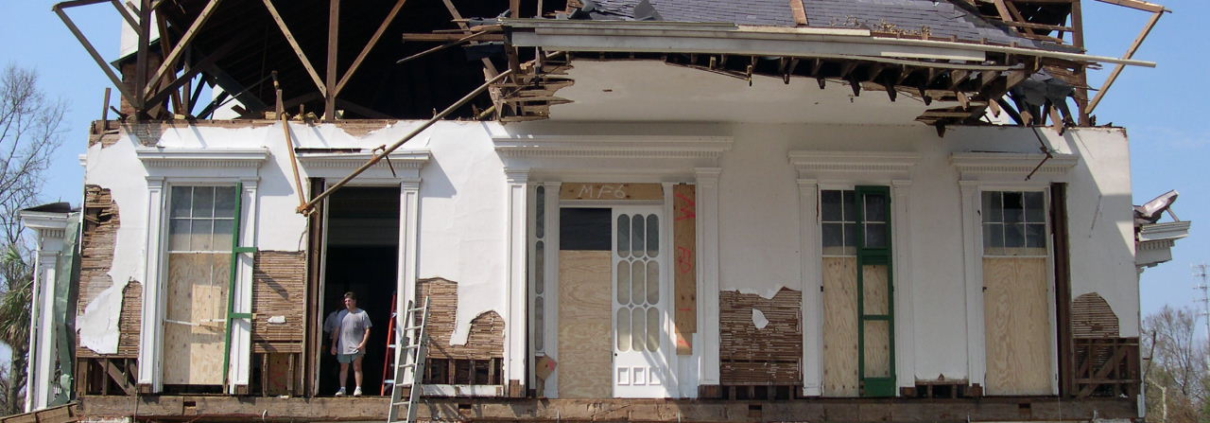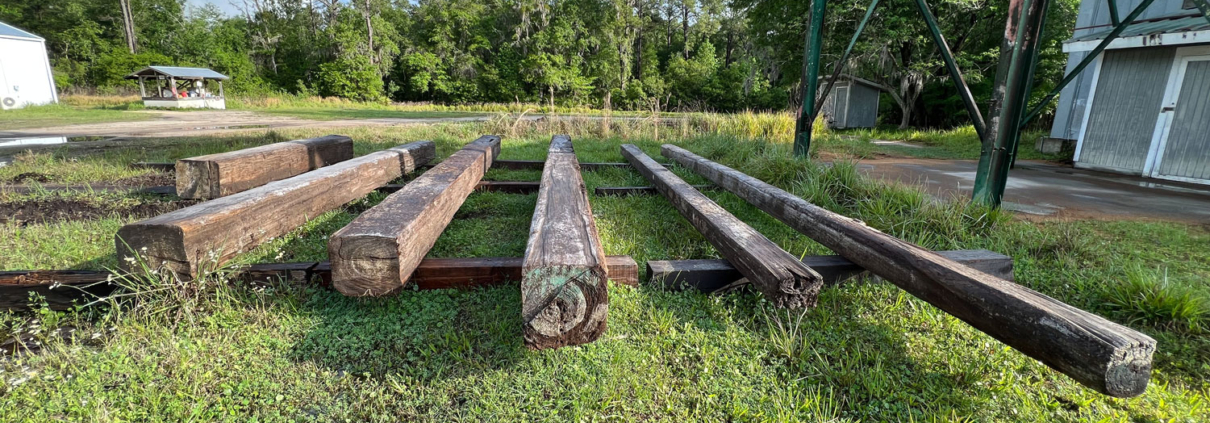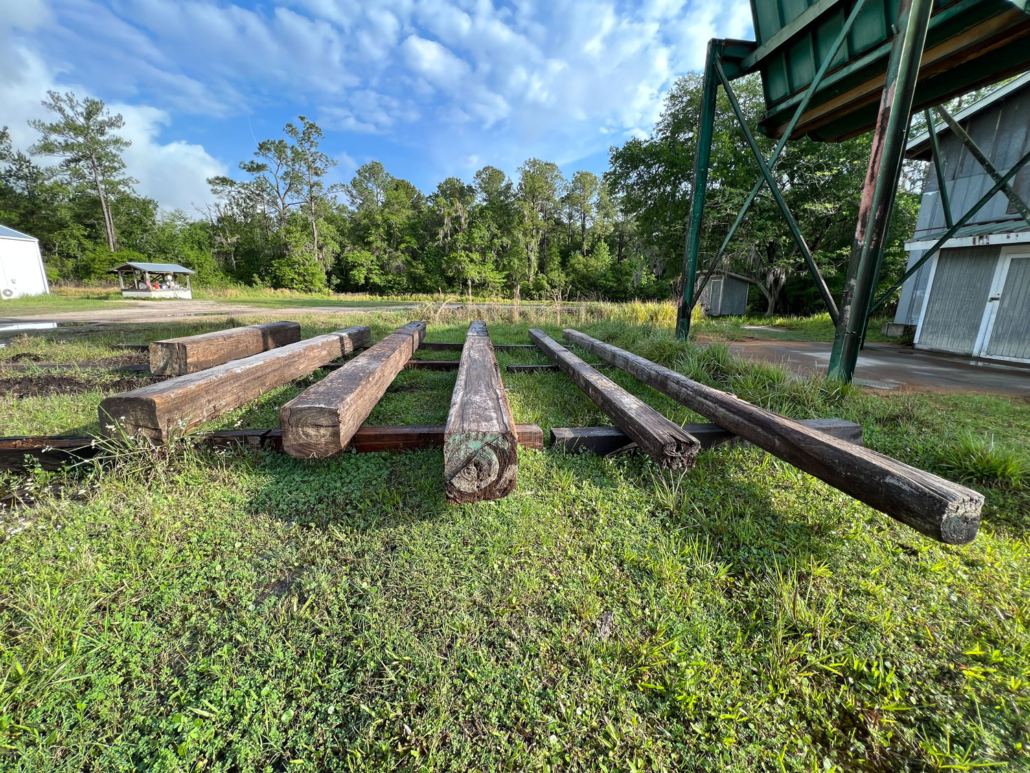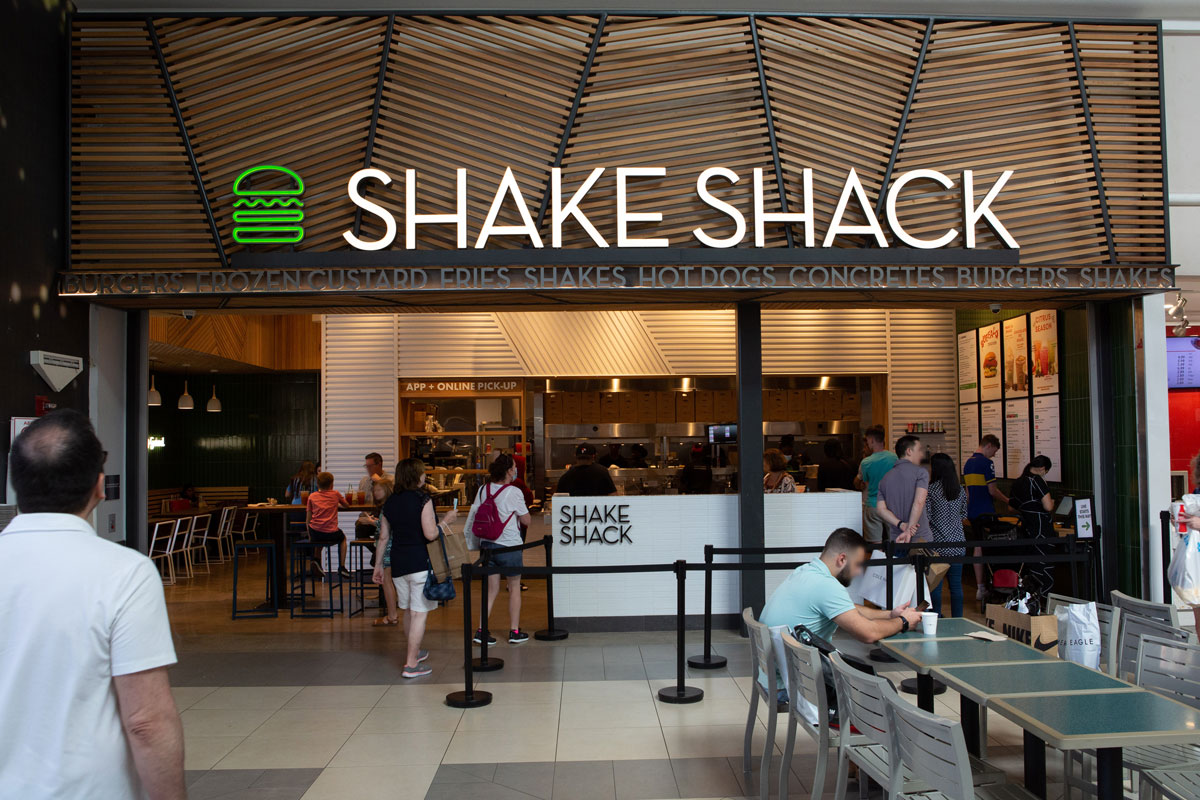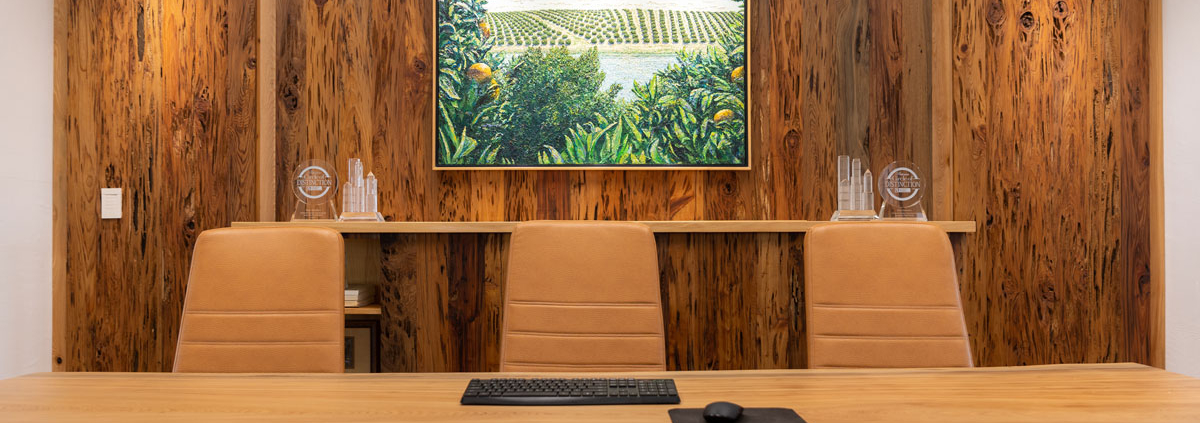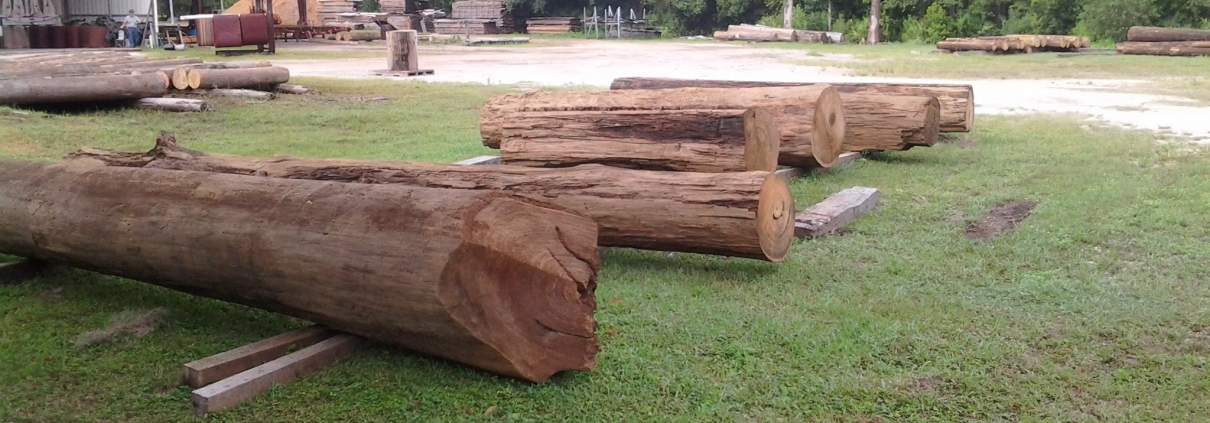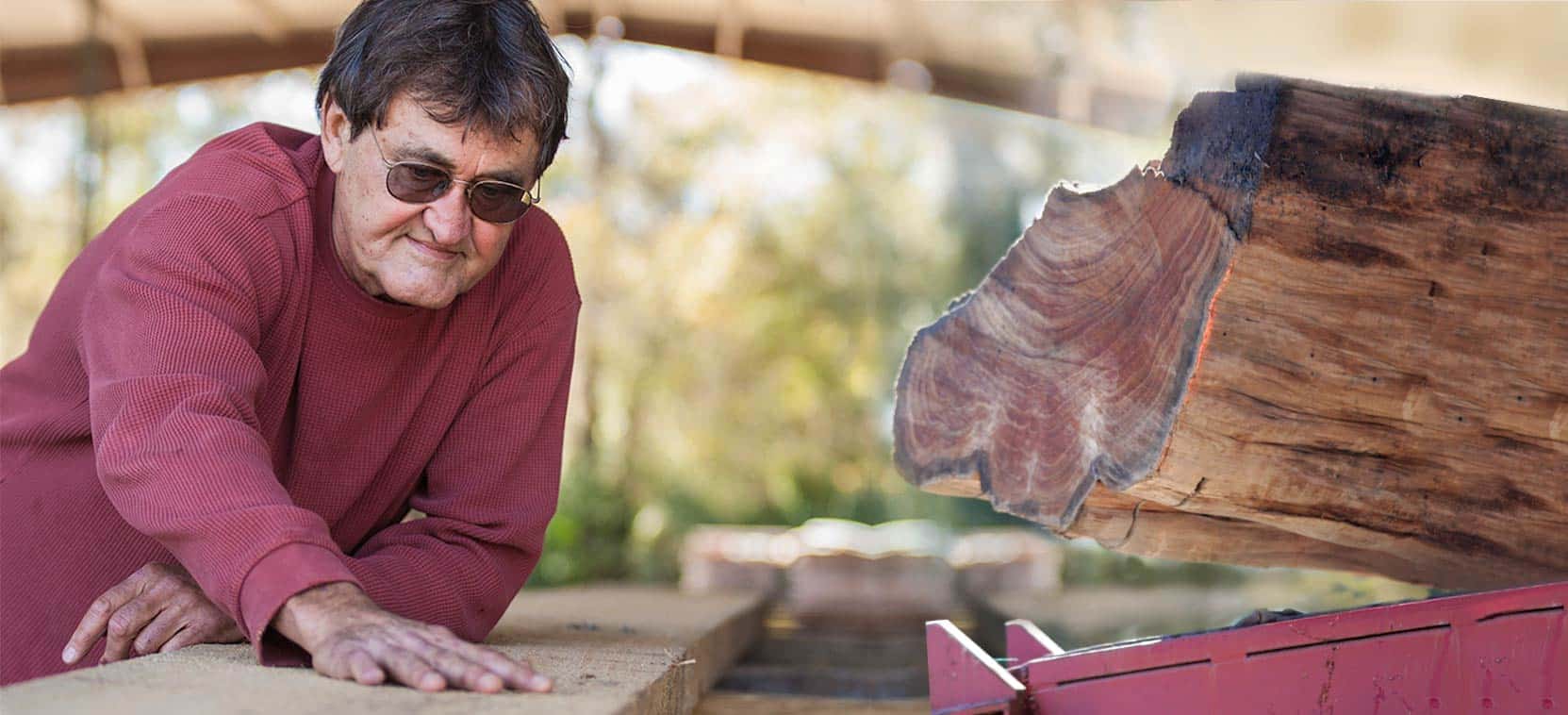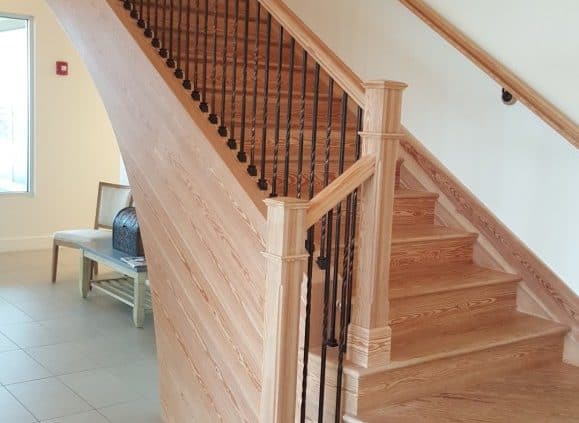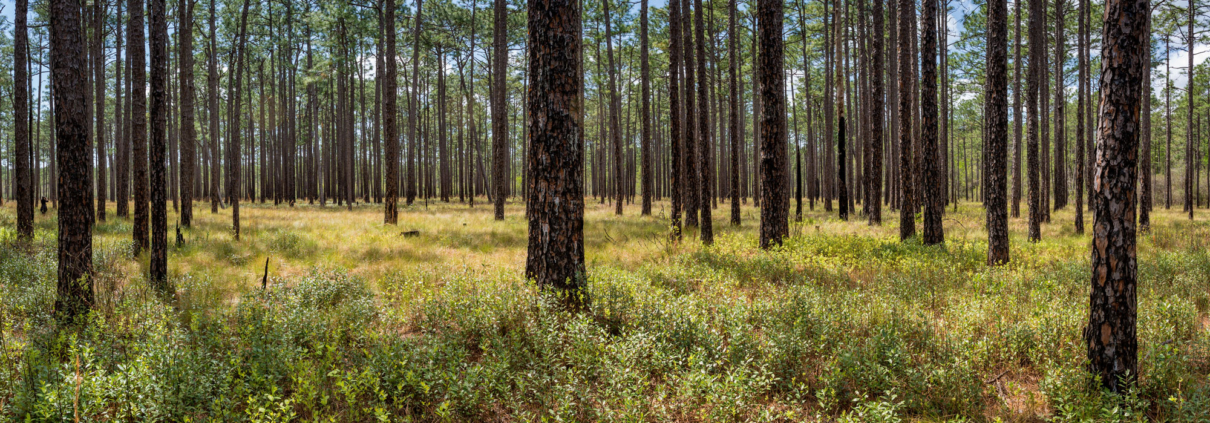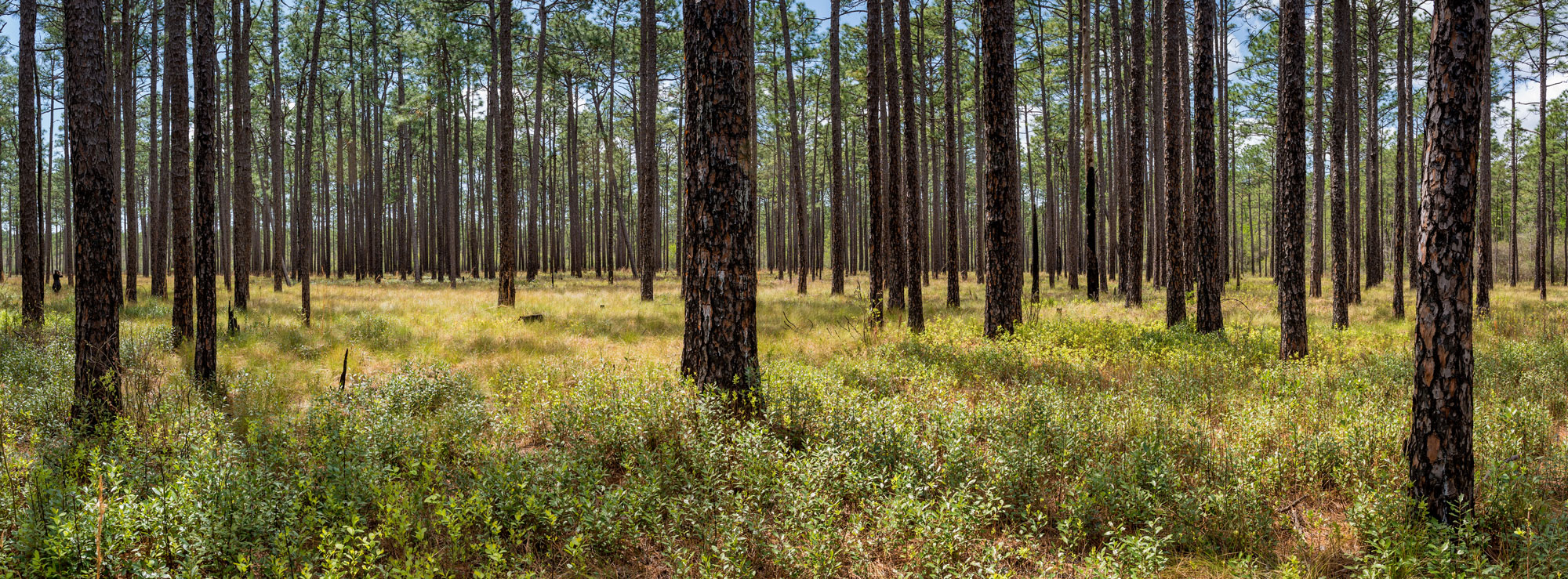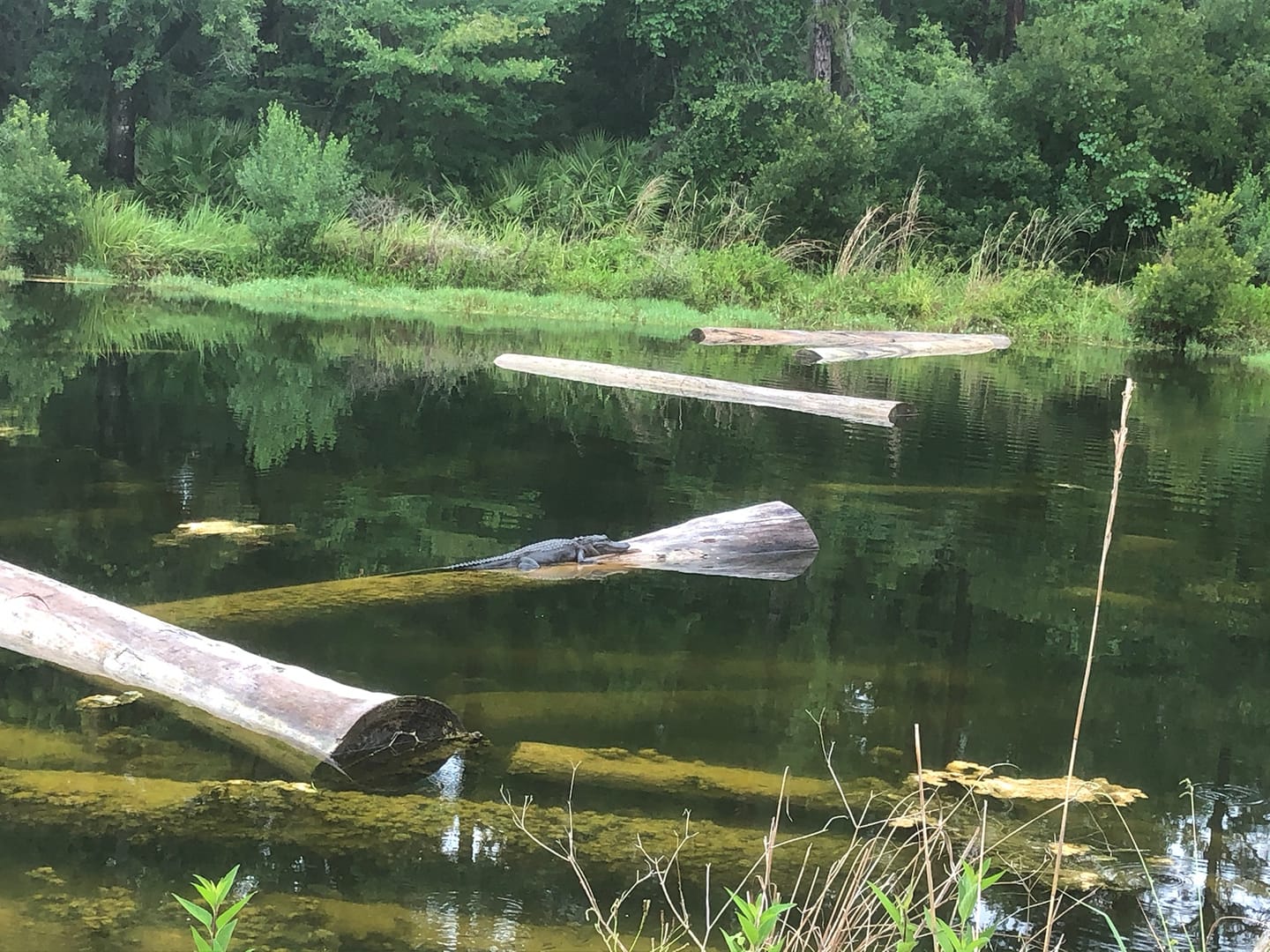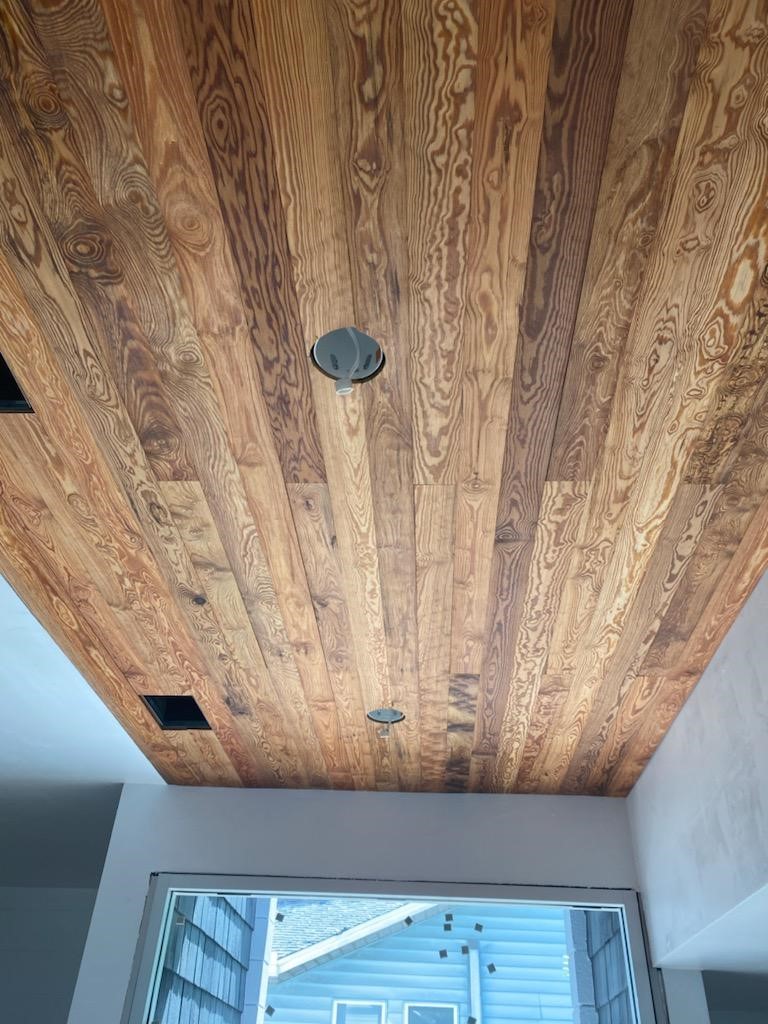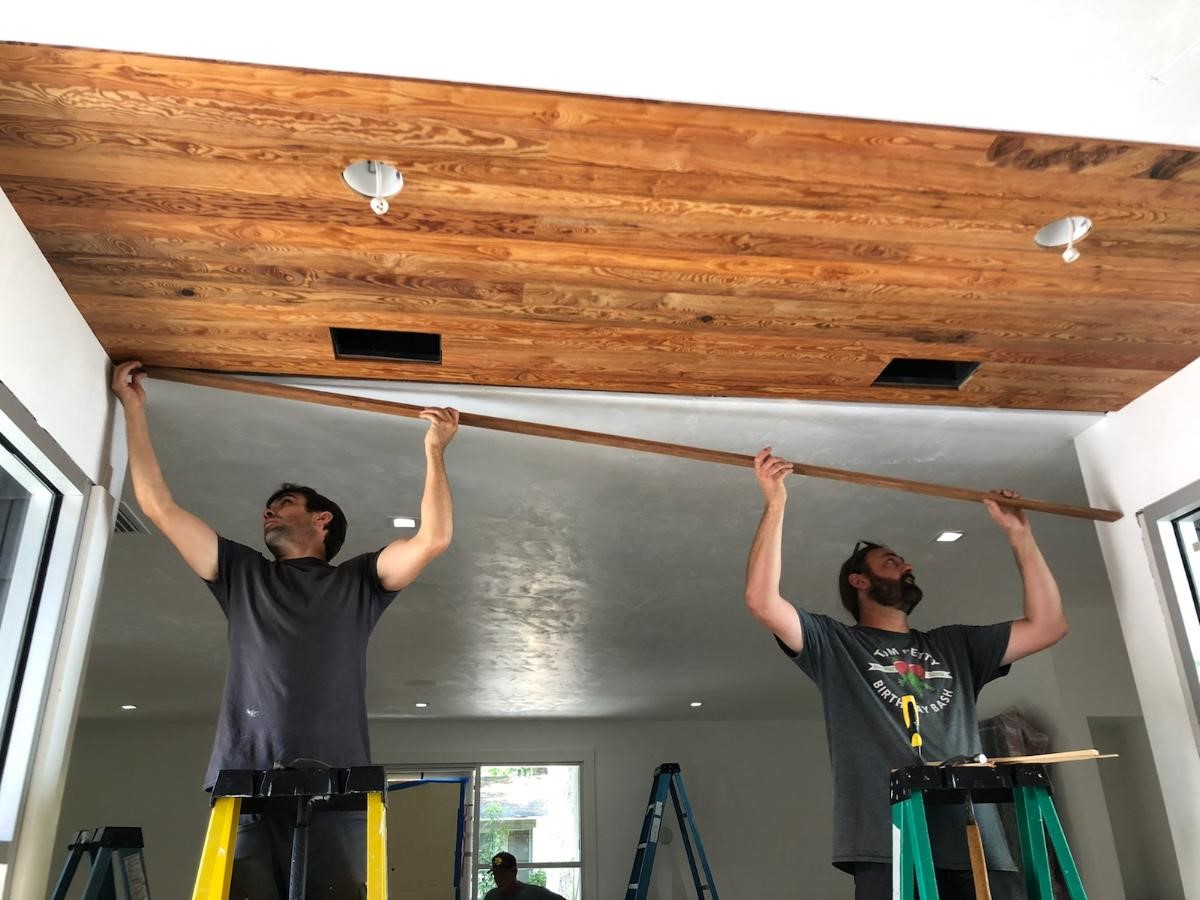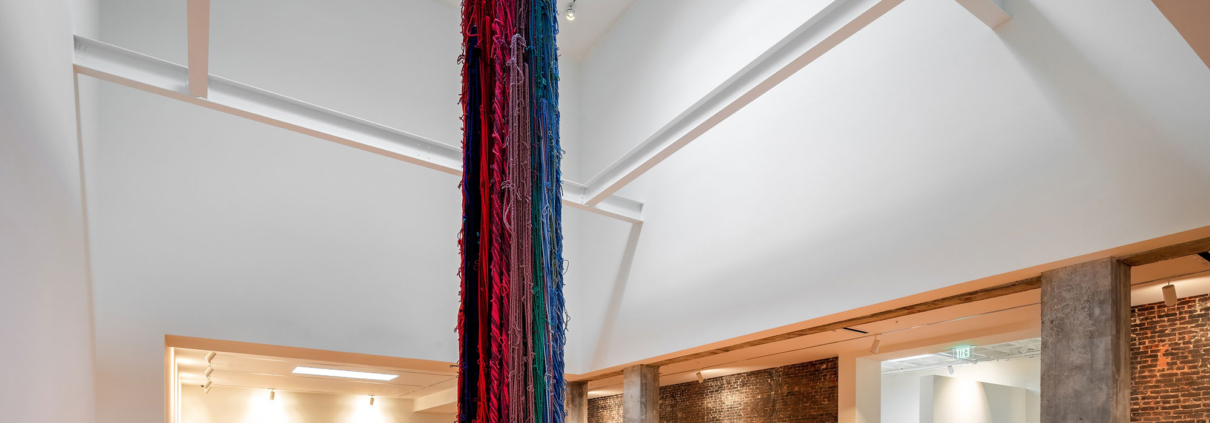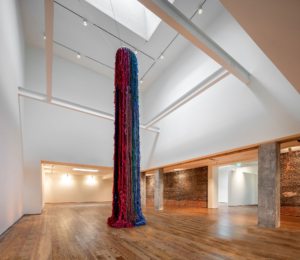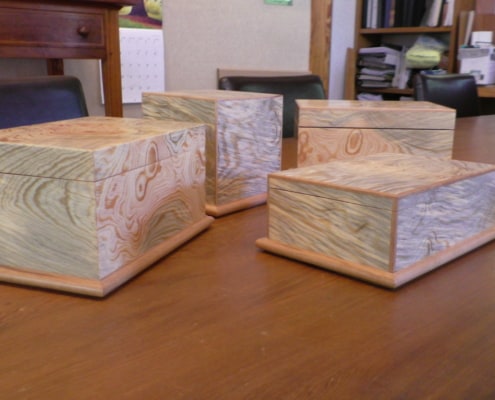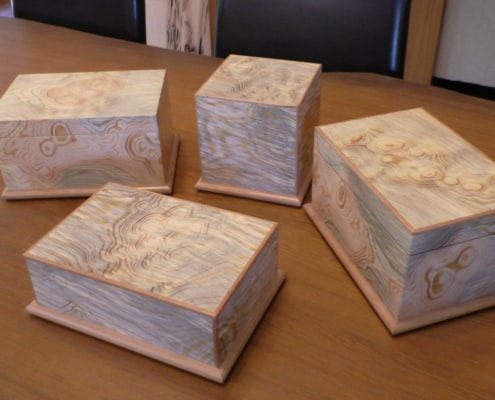In August 2005, Hurricane Katrina ravaged the Gulf Coast. A great number of historic homes were among its many victims. In Ocean Springs, Mississippi, two such notable landmarks were the Louis Sullivan and James Charnley cottages. Charnley was a Chicago based businessman and lumber baron who owned and timbered large tracts of Mississippi longleaf pine. Sullivan was a renowned Chicago architect and father of the modern skyscraper. He and Sullivan were good friends. The baron commissioned the architect to design and build him a vacation home on the Gulf where he could escape the rigors and the winters of the Windy City. On the adjacent property, Sullivan fashioned his own vacation cottage, a slightly smaller version of the Charnley retreat.
Helping to design and build these gulf side treasures in 1890 was Sullivan’s apprentice, Frank Lloyd Wright. Actually, great controversy has revolved around exactly which architect played the greatest role in the design. The two cottages looked nothing like the highly decorative and largely vertical Victorians and Queen Annes so popular in that day. Instead, the cottages were quite simple and reached out across the landscape in a horizontal fashion that suggest a precursor to Wright’s later Prairie style. They were considered to be two of the earliest examples of American modern residential architecture.
Katrina showed little mercy. The storm battered the two homes relentlessly. When the tempest had passed, the Sullivan cottage was completely gone. Many have speculated that it was hit by a tornado. Charnley was badly beaten and sat straddling what was left of its foundation.
Enter the very determined Historic Preservation Division of the Mississippi Dept. of Archives and History (MDAH). The division organized volunteers to salvage literally thousands of pieces of the home immediately after the storm and persuaded the property owners not to let FEMA bulldoze the house. Further, the MDAH raised the grant funds that permitted the hiring of fine restoration professionals John G. Waites Associates Architects, Larry Albert & Associates Architects, and J.O. Collins Contractor to undertake the restoration. Finally, the department assisted the Mississippi Dept. of Marine Resources in acquiring the Charnley-Norwood property as a key component of the Mississippi Gulf Coast National Heritage Area.
General contractor, J.O. Collins, began putting the survivor back together and architect, Larry Albert, spec-ed Goodwin to provide the flooring and the curly heart pine paneling on the walls. The Goodwin company milled 800sf of curly heart pine to adorn the walls and another 1000sf of 3-1/4” LEGACY (building reclaimed) VERTICAL heart pine to replace the floor. The resulting restoration is over the top and today, Charnley once again stands overlooking the Gulf of Mexico; a shining example of accurately and lovingly finished historic restoration.
Photo curtesy of the Mississippi Dept. of Archives and History.
Listed on the National Register of Historic places, and designated both a National and Mississippi Landmark, Beauvoir has a storied history. The home was built by Mississippi planter, James Brown, in 1848 and completed in 1852. She sits immediately on the Gulf of Mexico in Biloxi, a forever dynamic and saline environment.
The estate was purchased from Brown by Samuel and Sarah Dorsey in 1873. Samuel died a few short years later. His widow Sarah, a novelist and biographer, learned of the financial woes that had befallen former Confederate States President, Jefferson Davis. Dorsey reached out to Davis and invited him and wife Varina Davis to join her at Beauvoir. They accepted.
Later, as Dorsey discovered she was dying of cancer, the author bequeathed the estate to the Davises. Jefferson and Varina moved into the home. Davis died in 1889. In 1902 Varina sold the property to the Sons of Confederate Veterans to be used as a veteran’s home and later a memorial to her husband.
The grand home has witnessed many storms over its nearly 175-year existence. In 1969 it survived a battering by powerful hurricane Camille. But in 2005 Beauvoir’s lucky streak ran out. On August 29th hurricane Katrina, one of the strongest storms ever to hit the Gulf Coast pummeled the old house with a 20 foot plus storm surge and punishing waves. Several structures on the campus were completely destroyed. The storm devastated the home opening its face to the gulf waters and ripping the old growth heart cypress exterior galleries off of the wood frame structure. That home survived, beaten, but standing.
In time, efforts came together to restore the historic home. Structural and interior restoration took place first. Later the broad gallery was replaced, but this time with modern, pressure treated lumber. Fast forward nine years and in that very saline environment, the pressure treated galleries began to twist and pull up to the point of becoming a safety hazard to visitors.
The Goodwin Company was called on by General Contractor JO Collins to mill 3,112sf of 1×6 River-Recovered ® Antique Heart Cypress to restore the Beauvoir galleries and the grand front staircase. Afterall, virgin, old growth bald cypress is what the hoes stairs and galleries were milled from originally. The tight growth rings and heavy concentration of naturally occurring, wood preserving cypresene oil in the River-Recovered ® material made it the perfect, stable choice for the restoration.
Any well-done restoration is historically accurate. And while the beauty of River-Recovered ® Heart Cypress is one of its significant charms, this project was all about stability and so the galleries and stairs were painted with porch paint as they had been originally.
Recently, we pulled River Recovered® longleaf pine logs out of our millpond to mill for several upcoming large projects. Among the material pulled were these six hand-hewn beams. Very rarely do our river logging partners come across beams like these on their dive excursions. Some are milled pieces. Others are obviously hand-hewn beams. So, what gives? How do squared timbers end up underwater? The answer is rather simple.
More longleaf southern yellow pine lumber was processed and exported out of Pensacola Bay, Florida than any other port in the country. It’s a good place to look for some historical context. Indeed, in the year 1900, Florida’s single largest economic revenue producer statewide was the mill in Bagdad, Florida on the western panhandle.
As mills like this one and others processed harvested longleaf, they barged it out to ships waiting in the deeper waters of the bay or simply floated it to the ship in rafts. The squared and hewn beams were easier to load into the ship than logs.
Accidents happen. From time to time, those barges overturned and sank or flotillas simply broke apart and the densest members sank to rest for a century or more on the bay bottom.
Heart pine beams like these may have been destined for industrial warehouse construction in the Northeast, for the construction of grand hotels across Europe, or even supportive ribbing in the diamond mines of South Africa.
These beams have a story to tell and each is a unique antique, a true part of American History. They were cut into squares and hewn 200 or more years ago and are among the oldest antique heart pine beams available.
Tasty burgers and Antique River Recovered® Heart Cypress make quite the combo. The recently completed Shake Shack in Vineland Point, Orlando is topped with Antique River Recovered® Heart Cypress. Cypress appointments fill this eyepopping burger stand; with custom-designed feature ceilings, sign backers, and an order/pick-up window.
The Vineland Point location features 850 square feet of 3/4 x 2-1/2″ Tongue and Groove paneling. 572 linear feet of 2 x 6″ was ripped into rough 2 x 2″ and surface to 1.5 x 1.5″. All materials are River Recovered Heart Cypress Vertical.
This Shake Shack location was designed by Gensler Architects, Tampa office, and the installation was completed by Bay Meadow Architectural Millwork, Inc. of Longwood, FL. Another Shake Shack Location in the Dadeland Mall in Miami was designed by Gensler Architects and completed by Southeast Wood Crafters in Boca Raton. We look forward to working with Shake Shack, Gensler Architects, and Udink Construction on Shake Shack’s new location in the Del Amo Fanion Center, Torrance, CA.
Find cypress that fits your project or that matches Vineland Point Shake Shack Cypress here!
Happy National Forest Products Week! Since 1960 the third week of October has been designated as National Forest Products Week (NFPW). The modern celebration has stayed true to the initial proclamation and has added the environmental needs of keeping our forests healthy for future generations.
“Whereas the bounty of our forest and timber lands provides our people with a source of strength and pride; and
Whereas as a major renewable resource, supported by the science of modern forestry, wood offers the availability and abundance to satisfy the Nation’s ever growing needs for many products—lumber, paper, building materials, chemicals, furniture, and cloth—all dedicated to improving the lives of our people…” – Dwight D. Eisenhower, Proclamation 3371
The Longleaf Pine forest is the prime example of why both views of the NFPW are important. The remnant of this once vast forest shows the importance of sustainably harvesting our natural resources. Being over-harvested in the 19th and 20th century we are lucky that these logs have survived to be used today. Had they rotted this resource would be limited at best today. To the original proclamation Heart Pine is an outstanding resource we have available to use. We should take pride in our forests and their abilities to provide for us and work together to ensure their health and availably for years to come.
https://heartpine.com/goodwins-environmental-mission/
https://www.fs.usda.gov/science-technology/forest-products-week
https://www.presidency.ucsb.edu/documents/proclamation-3371-national-forest-products-week-1960
I was fishing the Suwannee River a lot in the Summer of 1976 and kept seeing deadhead logs. The term came about because the small end of the log floats like a head bobbing in the water. My antique business was in Micanopy and a friend (Jerry Moore) helping me source the antiques told me he could bring up some of the logs if I wanted him to.
We took the logs to an old sawmill nearby and from the moment I first saw the life and light in the ancient wood I knew people would want to have some of it. So, instead of fishing we spent our spare time pulling logs and having the wood sawn into beautiful, durable, and historic lumber. Then came the sawmill to saw it ourselves.
About the only time you cannot dive to find the old logs is when the rivers are in flood stage. The water is a little warmer in the Summer, so every July Jerry and I made a pilgrimage to a different river area that we thought likely to have the ancient sunken logs.
The local libraries and archives are a good way to research old sawmill locations. Logs were often stored in the water next to the sawmill and the densest and best often sank. Or, we might find a bend in the river where an entire raft had sunk. The rafts were generally 15 or so logs across and a couple of logs for cross members. There might be 20 or so such raft sections connected with chains or ropes.
We learned the best ways to search the river bottom with a grid. And we inevitably would find a lot of ‘second growth’ logs that were downed from storms or floods. Second growth aren’t worth pulling up as the wood is neither dense nor durable. Plus, it is commercially available, whereas the ancient logs are rare and valuable.
We searched river beds in NC, SC, GA and AL. I had a hand drawn map from 1881 of Florida’s forests, so of course we traveled all around Northern Central Florida and the Florida Panhandle. What we ultimately learned after years of this research is that the spring fed Florida rivers held the most and the best ancient logs. The best heart cypress comes from the Panhandle and the best heart pine from the Suwannee, Withlacoochee, and St John’s rivers. The St. John’s also has a lot of heart cypress waiting to be discovered.
– George Goodwin
Almost every wood floor will change color throughout time due to exposure to direct or indirect sunlight. But what are the changes you should expect from your wood floors when they see the light of day? Our River-Recovered® Heart Pine wood will turn darker! Beautiful, intense deep tones start developing as wood floors age. Changes in the color of the floor occur more rapidly during the first weeks after installation. Floors will continue to change colors at a slower pace for several months to follow. Depending on how much sunlight the floors are exposed to will also depend on how much the colors will alter.

Legacy Heart Pine
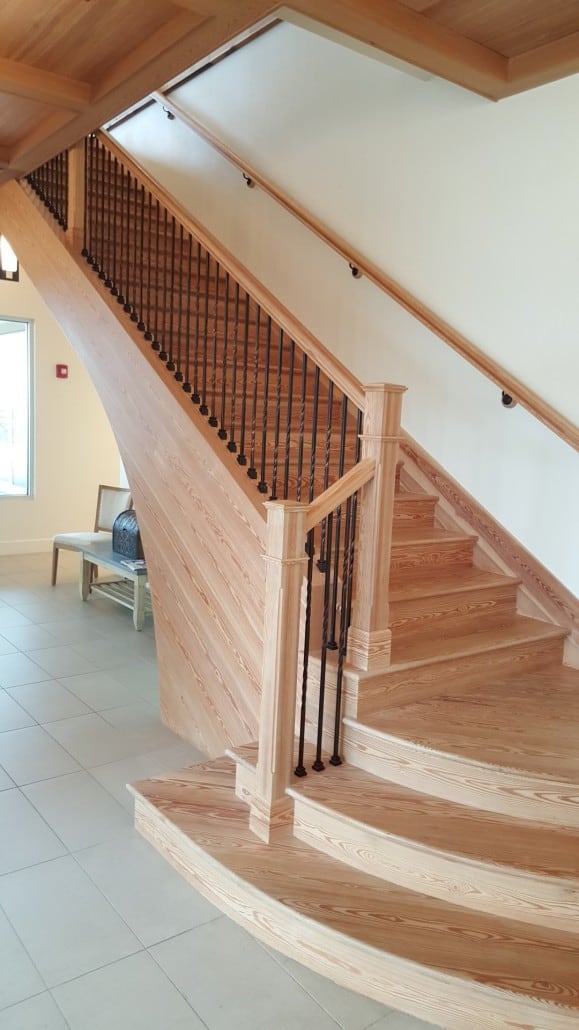
River-Recovered® Heart Pine
But not all wood will have as drastic color changes after installation. Depending on what type of wood is selected also depends on the appearance over time. For example, our River-Recovered® Heart Pine, rest in rivers for over a century. Since this wood has not yet seen the light of day, the color starts out much lighter and starts to develop after being freshly sawn. Light yellows transition to deep-orange/brown tones, especially with pine that is highly resinous. On the other hand, our Legacy collection of Heart Pine wood is reclaimed and has been utilized before. More times than not, this wood already shows noticeable color changes on many board faces, due to the exposure of sunlight previously endured. However, the color deepens to the same range in wood from reclaimed and virgin wood.
Furniture and rugs on freshly installed wood floors are naturally shielded from sun exposure. Ultimately, those areas will have a different intensity in color than the rest of the floor. If you decide to spruce up your area after time and change the layout of the room, it is essential to understand that the areas previously shielded from the sun will most likely be different tones than the areas exposed to sunlight.
Modern finishes can provide protection that allows your floor to maintain excellent condition for many years. Additionally, certain finishes are meant to block the effects of sunlight, slowing down the rate of color change. The type of finish ultimately chosen should be considered in the decision-making process to determine the final color of the floor. Our finishes we offer come in many colors, sheens, and tones, so you can achieve any look you desire with your wood floors. It is important to follow the finish manufacturer’s guidelines for use, care, and cleaning practices. Repairing and refinishing the floor when necessary is vital for the longevity of your floors. Proper maintenance and care will improve your floors for years to come.
You can read more here about natural color changes throughout time in wood floors:
https://heartpine.com/natural-color-changes/
Unquestionable Longevity of Goodwin Company Heart Pine and Heart Cypress Woods
Since 1976, Goodwin has been manufacturing gorgeous, antique wood of people’s dreams! Over the years, we have heard common myths and misconceptions about wood flooring. We want to put them to rest! A common misconception we’ve heard throughout time is that forests diminish to produce wood for residential homes and commercial spaces. This is simply not true! In fact, having a wood floor is a very sustainable and environmentally friendly choice! Wood is a renewable natural resource. According to National Geographic, “renewable resources are an energy source that cannot be depleted and are able to supply a continuous source of clean energy.” Wood is a living organism and gathers its energy from the sun, as well as soil nutrients. Wood will continue to grow back after a forest is harvested.
River-Recovered® logs were previously cut down over a hundred years ago and have been sitting perfectly preserved underwater. We store our River-Recovered® logs in our log pond on the property, where we have about 700 logs resting. Often, we have several critters that like to rest on these logs in our pond, like turtles, birds, and occasionally alligators! Our founder George Goodwin started recovering logs from rivers in the 70s. His approach at pulling logs from the river was careful and sustainable; to make sure other wildlife remained undisrupted. With the help of environmental organizations, George aided with establishing Florida’s Deadhead Logging Permit. This permit ensures other river loggers recover logs from rivers in environmentally sound ways.
But not all of our wood that we produce originates from river logs; Goodwin also offers reclaimed and sustainably harvested wood! Our Legacy collection includes heart pine that was once used in buildings dating as far back as the Industrial Revolution Era. These boards oftentimes include previous staining and nail holes, showcasing the wood’s marks of time. Our Renaissance collection consists of grades that have been rescued and/or sustainably harvested, including old-growth trees that fell during storms! Instead of this wood going to mills that do not practice lean manufacturing or wood even being destroyed, Goodwin swoops in to repurpose and give second chances. We breathe new life into this wood, and hope to give it a new forever home! Our goal is to give the most life out of the logs that are ready to be utilized.
You’ve probably seen featured photos before of ceilings designed with Goodwin wood! But have you seen a ceiling made up of our stunning River-Recovered® Curly Heart Pine?
Take a look at this foyer ceiling appointed with Goodwin’s curly heart pine by our friend, Ryland Wagner, of Joyner Construction! Ryland is restoring and remodeling his mid-century modern home in Gainesville, Florida. This project required 60 whole square feet of our 3 ¼ curly heart pine. An accent ceiling is an excellent way to draw the eye upwards and to dress an area with an outside-of-the-box approach. Here are a few pictures of the ceiling in progress:
Ryland has lived in this house since 2002 and started the remodeling process back in December. The house was built in 1969 by the University of Florida Architecture. Dan Branch was the architect believed to have built the house. Decades ago, the architecture classes at the University of Florida would map out and design a house the first semester of class. In the following semester, the class would actually build the house! This eventually stopped when the City Building Department took greater control of inspections in the 1970’s. Ryland says his goals in the remodeling of his home were “to match the design intent of Dan Branch and his class”. The project is expected to be completed in June 2021, with more pictures of the finished product to come!
Our River-Recovered® Curly Heart Pine is extremely rare! In fact, it is SO rare it’s only found in just the outer boards of 400 – 500 logs that we mill. The grain is curly and burled, with luminous vibrant colors and a variety of tones. We mill this wood much slower than traditional antique heart pine to guarantee that the burled grain remains intact. Curly heart pine is the perfect wood to use as an accent, and its pattern often looks three-dimensional, holographic, and even topographic at times. It is truly a unique, desirable type of wood!
Working with Joyner Construction Partners
Ryland is a project manager at Joyner Construction Partners, LLC. Where he works alongside his father, Richard. Goodwin has also partnered with Joyner Construction for previous projects, including:
The 1926 Firestone Building in Gainesville, FL
The restoration of The Matheson History Museum Library & Archives in Gainesville, FL
Local Provisions restaurant in Gainesville, FL
You can click the links to see the photos and videos of the projects we collaborated with Joyner Construction to create!
“I am writing to offer my highest praise, and most profound gratitude to The Goodwin Company for their partnership on the creation of the floors of our new art museum. The beautiful floors of our 23,000 sq ft exhibition galleries were lovingly crafted of exquisite reclaimed heart pine, salvaged from the joists of the 1926 M. Leo Elliott designed former Sarasota High School.
As an art museum director and curator, meticulously designing every aspect of the gallery experience was paramount to the success of the project. After seeing the gorgeous raw lumber during the demo phase of the project, centuries-old, I became committed to repurposing this special wood—from an historic, aesthetic and environmental standpoint, this was unquestionably the right thing to do.
But it was not easy.
We were so fortunate to find our partners at The Goodwin Company to bring this ambitious project to fruition. The floors are beautiful in their own right, and they provide an elegant platform and framing device for the wide range of contemporary art we install there. They complement, but never compete with the art. We could not be more pleased with the results.
Goodwin understood the complexity involved in adaptive reuse, and the particular challenges involved in repurposing a 1920s era building into a high-performance building, with the necessary environmental conditions for an art museum, and the heavy foot traffic of a public space. During construction Goodwin brought the first technical director of the National Wood Floor Association to meet with the entire team and assist with the subfloor, sound attenuation and insulation requirements. Once the floor was installed, Goodwin brought the finish manufacturer’s team onsite to consult with the Museum’s curatorial and facilities team to ensure the long-term preservation of this fine art environment.
In addition to their consummate professionalism and technical expertise, the Goodwin team was a pure delight to work with, always going above and beyond to creatively problem-solve and to ensure the highest quality product possible.
If you are considering The Goodwin Company for your project, I would be delighted to share more about this journey, should you wish to discuss.
With best regards,
Anne-Marie Russell, Founding Executive Director, Sarasota Art Museum ”
Do you remember the beautiful and unique River-Recovered® Heart Pine Curly poker chip holders we featured awhile back? The same millwork expert who created the poker chip holders is at it again!
Take a look at these gorgeous wooden boxes handcrafted by Jerry Yermovsky of Architectural Millwork Consulting (AMC). These particular boxes are made up of our extremely rare Curly Heart Pine Sap Wood with blue sap stain. Jerry chose to use curly heart pine because of its notable features. In fact, curly occurs in only one of every 400 logs! He has also used our other grades for his custom creations, like our vertical heart cypress and wild black cherry.
Goodwin’s showroom displays more of his specially made boxes. We are fortunate to have the opportunity to work with such an amazing architectural millwork craftsman. Thanks for sharing these with us, Jerry!

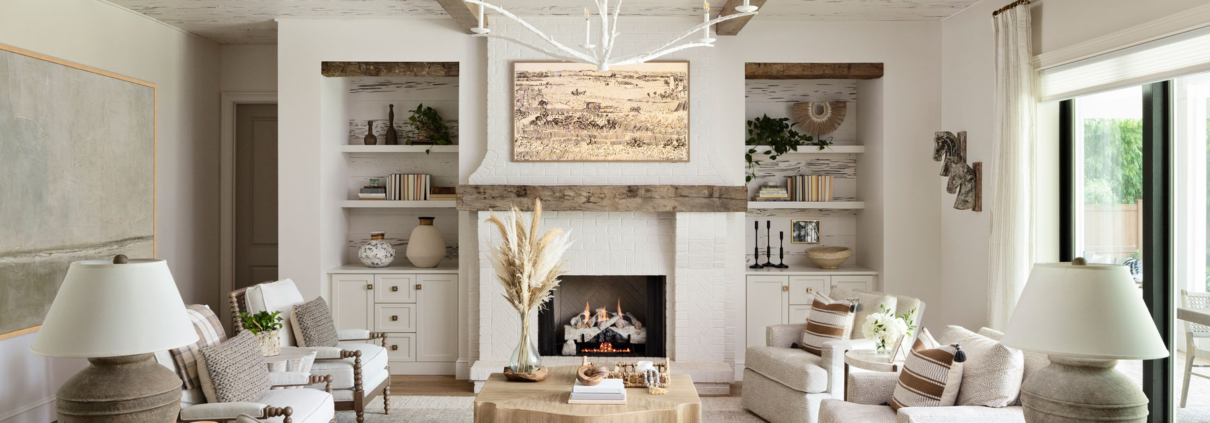 The Goodwin Company | HeartPine.com
The Goodwin Company | HeartPine.com
